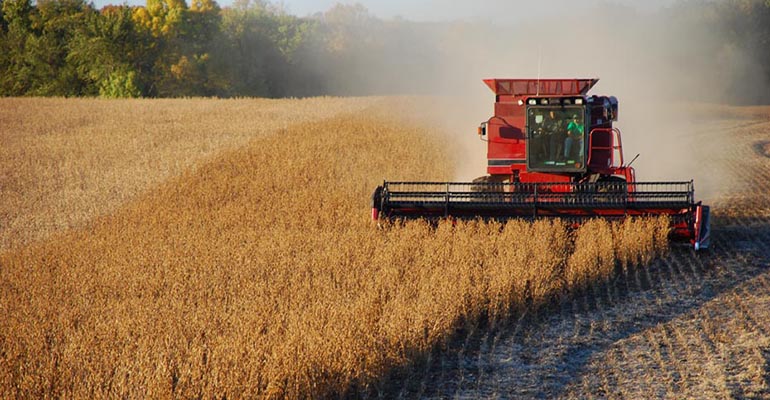
Three years into a bear market has created a renewed interest in marketing plans. How does one write a pre-harvest marketing plan? You could read Part Two of my book, Grain Marketing is Simple. Or, here’s a condensed version of five steps to a pre-harvest marketing plan.
1: Start with a clear objective. My soybean plan (shown here) says I will “Buy crop insurance to protect my production risk and price 75% of my anticipated soybean crop by mid-June.” Too aggressive? What’s your objective?
2: Establish a minimum price objective. Mine is $9.50/bu. or $10.25/bu. Nov’17 futures (note the basis of 75 cents under – adjust for your area). These figures - based on Minnesota production costs – are, in my opinion, the most important part of the plan. Set too low and you are busy pricing at unprofitable levels. Too high and you do nothing.
3: Establish a maximum price objective. My highest price objective is $12.50/bu. Nov’17 futures. Likely to happen? No. But a $2/bu. plus rally is not unrealistic assessment of upside potential. Once you understand the role of decision dates and pricing tools (Steps 4 & 5), you will see why the max price objective is not very important. But teaming your max target with your minimum allows you to “bookend” all other price objectives in the plan.
4: Establish decision dates. Decision dates work in tandem with your price objectives. If you reach a decision date before a price objective is reached but the price is above your minimum, price the grain. Decision dates make your plan a real plan for action. Those higher price objectives are nice, but decision dates trump the need for a strong rally. They keep you moving forward, as long as prices are above the minimum.
My decision dates are clustered in the spring, because patterns point to AMJ as a good time for price rallies. Are grain markets guaranteed to rally this spring? Of course not. But we’ve had nice rallies in each of the last three years. Let’s hope for an encore.
5: Select your pricing tool. Here my plan is vague, but for good reason. The choice of a forward contract, sale of futures or use of options is a tactical decision that depends on your opinion of basis and current market factors. In general, I prefer to use low-cost pricing tools early in the plan (i.e., forward and futures contracts). In the later stages of plan execution, I will consider more creative pricing tools like options. If the market shows real strength, now might be the time to use a technical tool to follow the trend. A written plan may look to rigid, but pricing tools “to-be-determined” is an opportunity to be flexible and creative.
What if prices never reach the minimum price? It happens. Corn and wheat prices remain nearly $1/bu. below my minimums. All I can say is that I am not comfortable approaching harvest with nothing priced. My preference is to price something (20-40% of production), even with prices less than costs, sometime next spring. What is your preference?
Soybeans: 2017 Pre-Harvest Marketing Plan
Objective: Buy crop insurance to protect my production risk and have 75% of my anticipated soybean crop (based on APH yield) priced by mid-June.
Price 5,000 bushels at $9.50 cash price ($10.25 Nov. futures) using forward contract/futures hedge/futures fixed contract.
Price 5,000 bushels at $10.25c/11.00f, or by Apr 11, pricing tool tbd.
Price 2,500 bushels at $11.00c/11.75f, or by May 10, pricing tool tbd.
Price 5,000 bushels at $11.75c/12.50f, or by June 9, pricing tool tbd.
Plan starts on January 1, 2017. Ignore decision dates and make no sale if prices are lower than $9.50 local cash price/$10.25 November futures.
About the Author(s)
You May Also Like






